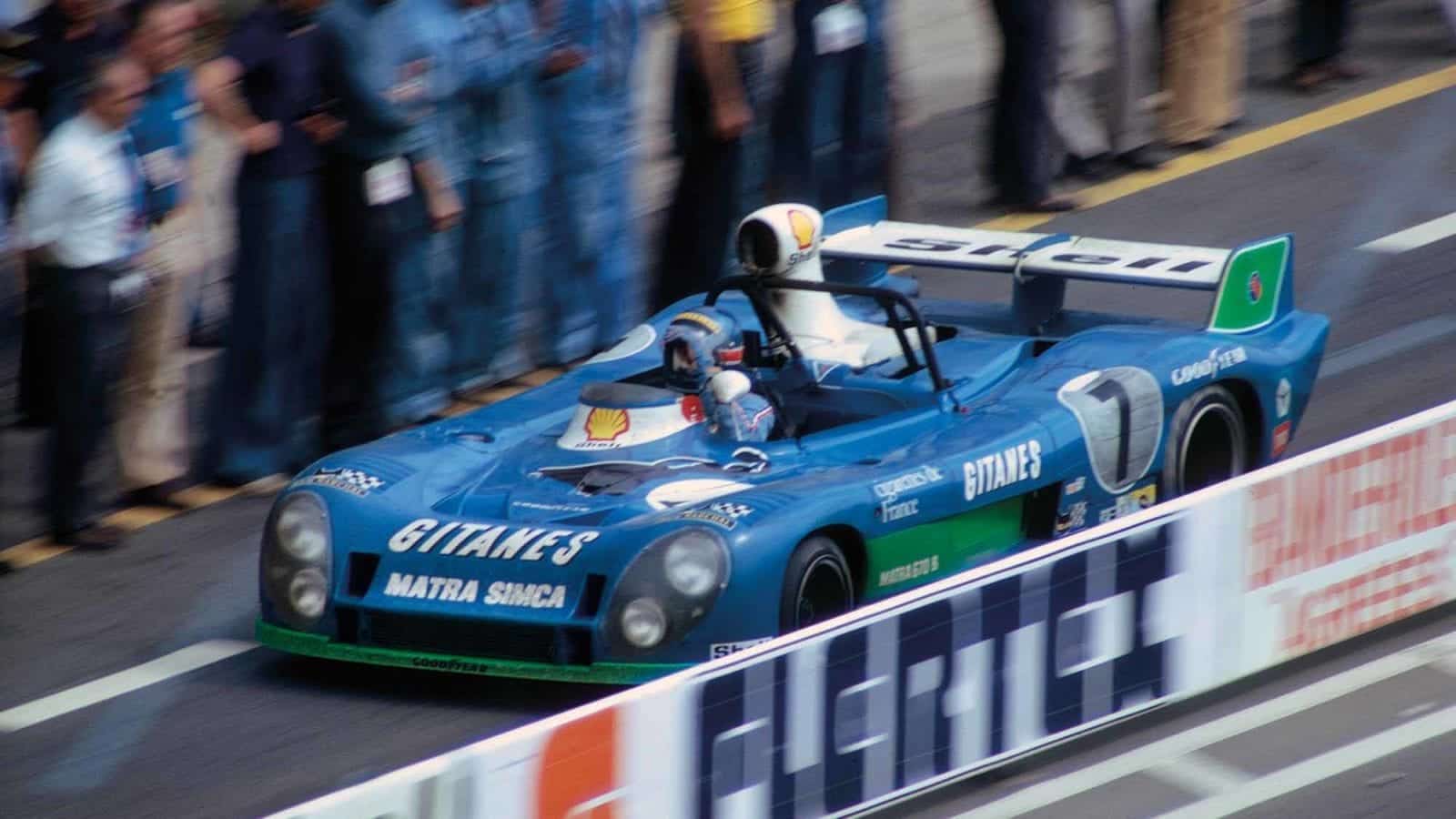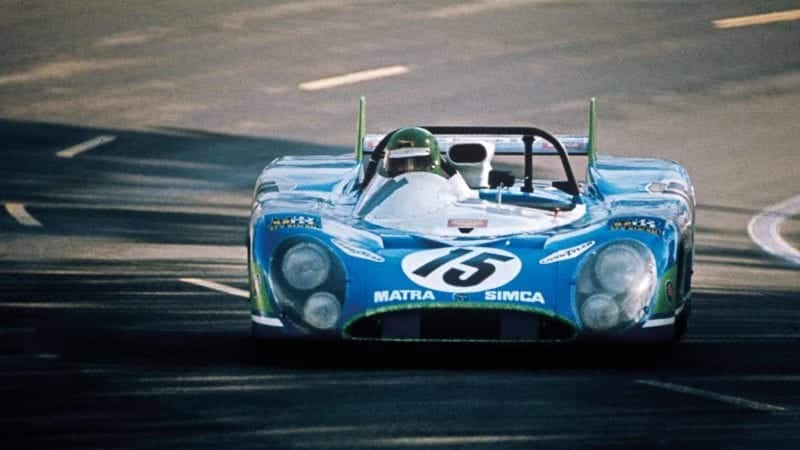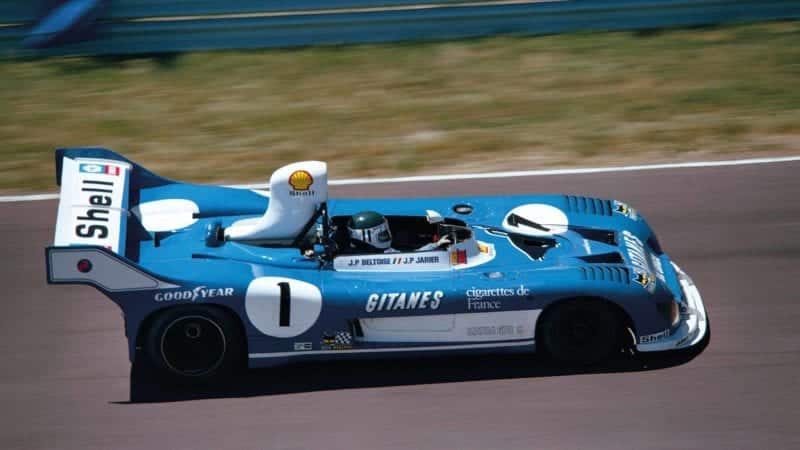Race car buying guide: Matra MS670
The Matra MS670 was the French car that broke the nation’s wait for a Le Mans winner

Victory at Le Mans 1974 made it three on the trot for the formidable MS670
Considering that Le Mans is a French institution, it’s somewhat surprising that the country has gone for such extended periods without much success to shout about at its home-grown Grand Prix d’Endurance. Early on there were wins for Chenard- Walcker, Lorraine-Dietrich, Bugatti, Delahaye and Talbot. But when the world began to take the challenge of La Sarthe more seriously, French machines faded into the background. That is, until Matra brought out the heavy guns. And the MS670 was the heaviest of all.
By the early 1970s, Louis Rosier/Jean-Louis Rosier’s 1950 win aboard their Talbot Lago Grand Sport stood as the last victory for a French car at Le Mans. Since then, British, German and Italian marques had dominated, and then along came Ford.
But the MS670 ended 22 years of waiting for the next home-grown hero to raise the Tricolore, even if it did have a slight Anglo- German helping hand in getting it lifted.
Matra was founded as an aviation and weaponry company in 1945 – its name stands for Mécanique Aviation TRAction. Having built its name creating aircraft weaponry, as well as breaking the sound barrier with one of its aviation engines – things changed when entrepreneur Jean-Luc Lagardère joined in 1963 and broadened the firm’s horizons by investing in Automobiles René Bonnet. Soon a succession of Matra-badged road cars began rolling out of the Romorantin factory.
Recognising the promotional value of racing, Lagardère’s next step was to get Matra involved with his motto of ‘Formula 3 to learn, Formula 2 to harden, and Formula 1 to win’.

The Le Mans 1972 winner, MS670-01, is to be sold at auction in February
It all began with an F3 entry in 1965, and then the inevitable progression toward F1 in 1967. In partnership with Ken Tyrrell’s team, Matra secured its first world title in 1969 with Jackie Stewart, and suddenly the plucky French firm stood on top of the world. Except, it didn’t stand on top of Le Mans.
With the road car production ramping up – largely thanks to a new joint venture with the larger Simca manufacturer – Lagardère saw more value in sports-car racing.
Matra’s early efforts were unremarkable. But in 1966 the Equipe Matra Sports team was founded to run its first serious contender, the MS620 coupé. Thanks to Graham Hill, Matra used a supply of BRM’s 1.9-litre F1 engines. However, the car proved difficult, often suffering retirements due to either its engine or gearbox.
“With Le Mans conquered, Matra withdrew from all racing after 1974”
Things began to come good when Matra ditched the BRM units and fitted its own racing-bred 3-litre V12 to its cars. Its first Le Mans finish came in 1969, with Jean-Pierre Beltoise/Piers Courage bringing the new open-cockpit MS650 home in fourth. Fast forward to 1972, and the ultimate evolution of what Matra had been working toward had arrived, the MS670 – an open- topped, all-aluminium monocoque, 450bhp V12, 700kg monster. Equipe Matra-Simca produced three monocoques, partnering Hill and Henri Pescarolo in one. Matra took the decision to withdraw from all other races in order to fully prepare, and with Ferrari electing not to take part having already won the World Sports Car Championship title, Matra was hot favourite.
Pescarolo/Hill dominated to claim Matra’s first Le Mans win, with the sister car of François Cevert/ Howden Ganley behind. It was a remarkable result, but Matra wasn’t done. Knowing its gearbox weakness, Matra had Porsche build the MS670 a unit instead. The result was two further back-to-back Le Mans wins for Pescarolo and Gérard Larrousse as Matra completed a stunning triple and even added the World Championship for Makes in 1972- 73. With Le Mans conquered, Matra withdrew from all racing after 1974, following the sale of its road car division to Chrysler.

The MS670C of the Jean-Pierres Beltoise and Jarier was an early retiree
at 1974’s Monza 1000Kms
Nine MS670 chassis were built and moulded into either B-spec (Porsche gearbox, smaller 13in wheels and new suspension geometry) or C-spec (remodelled aero).
The daddy of them all will go up for sale at Retromobile in Paris in February. MS670-01 – the very car that carried France back to the top of its own race, and cemented Hill’s legendary ‘triple crown’ of motor racing – will go up for sale for the first time. You’ll need deep pockets, though, as it’s expected to fetch upwards of £3.7m.
Matra MS670
- Price new N/A
- Price now £1.1m+ (depending on provenance)
- Engine 2999cc aluminium V12
- Rivals Porsche 908, Alfa Romeo Tipo T33, Ferrari 312PB
- Verdict A glorious French recipe, even if sprinkled with Anglo-German garnish
